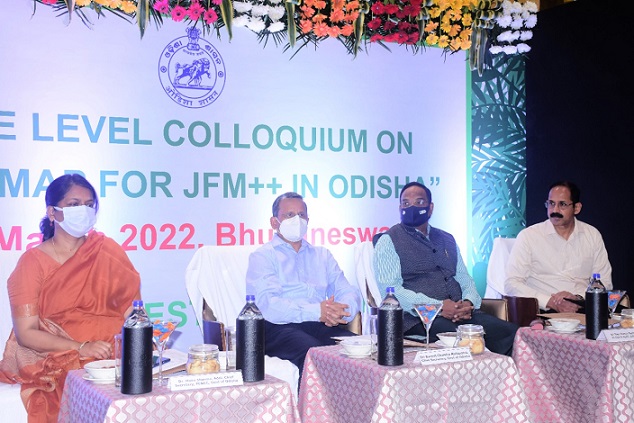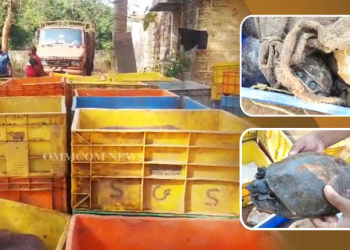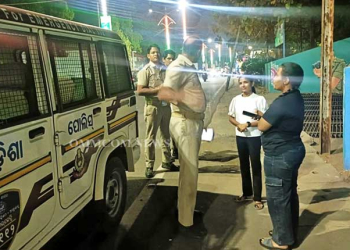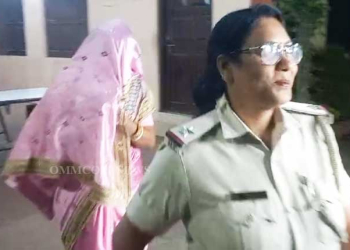Bhubaneswar: Chief Secretary Suresh Chandra Mahapatra inaugurated the Colloquium on JFM in Odisha on Wednesday. The assessment study by an independent third-party showed that Odisha model of JFM proved successful with consistent growth in forest coverage, density and wildlife. Speaking on the occasion, the Chief Secretary directed to make the approach more transformative and people-centric.
“Odisha model of JFM has proved successful during last years leafing to consistent growth in forest canopy, density, and wild life. The people inhabiting the core areas of the sanctuary have come forward to accept Government’s scheme for voluntary shifting to fringe areas.”
“Their belongingness towards the forest would be manifold when they would find more remunerative means of livelihood from it,” Mahapatra said. He directed the department to make the “new strategies of forest management more transformative keeping people and their livelihood at the center.
Mahapatra directed the field level forest officers to have regular meetings with the JFM and village committees, and assess their basic common requirements through direct discussions. “Those basic requirements could me met through convergence with different departments; and such an approach would win more confidence of the people.”
He assured that funds for the purpose would not be a constraint, and Government would provide all other support. Mahapatra added, “Once problems of the people are resolved through forest management strategies, they will turn to the civil regiment force for forest protection in their respective areas.”
Additional Chief Secretary Forest, Environment and Climate Change Dr Mona Sharma said, with encouraging learning from JFM, State is now on its path towards a more transformative model which she termed as JFM++.
In this new transformative model, added Dr Sharma, focus will be on (i) sustainable forest management through empowerment of the community, and (ii) Collaborative efforts with different departments for enhancement of livelihood opportunities for the community.
Presenting outcomes of the Independent Third Party Assessment Study, Principal Chief Conservator of the Forests and Head of Forest Force Sishir Kumar Ratho said, “As of now 14,222 Vana Sanrakshyana Samities (VSS) and Environment Development Committees ( EDCs) have been formed in 30 districts of Odisha covering the area of 12,192 sq kms of forest area. Their participation in forest development activities led to 70% reduction in pressure on forests.”
“The hazards like forest fire, use of poles and timbers, and grazing etc have been reduced to the tune of 50%. Because of this several benefits like increased regeneration of forest, increased employment and income generation opportunities for people, and increased collection of non-timber forest produce took place, which in turn added to income of the community from forest and forestry. JFM approach also led to creation of community assets like school buildings, storage go-down, helath care facilities, creation of nature camps and eco-destinations. These facilities also added to socio-economic wellbeing of the people and the area.”
It was the new strategy of JFM ++ would be framed with inputs from the present colloquium, and would be rolled out with macro and micro plans from the coming year. The colloquium was held in three different sessions. Besides the inaugural sessions, the technical sessions were held on the themes like “landscape approach in forest management’, and “enhancing livelihood for forest fringe villages”.
Among others, Suresh Chandra Mohanty, Former PCCF, Sadeep Tripathy Former PCCF, Asutosh Samant Singhar Former Addl PCCF, Sidhanta Das Former DGF, Sushil Kumar Popil PCCF, Manoj V. Nair CCF, Meeta Biswal, Project Director OFSDP, Sanjeev Kumar Chadha, Special Secretary Forest and Environment, Rajiv Kumar Chairperson Odisa Bio-Diversity Board, Manoj Mohapatra RCCF, Prakash Chand, DFO, Anand S, DFO participated.



















